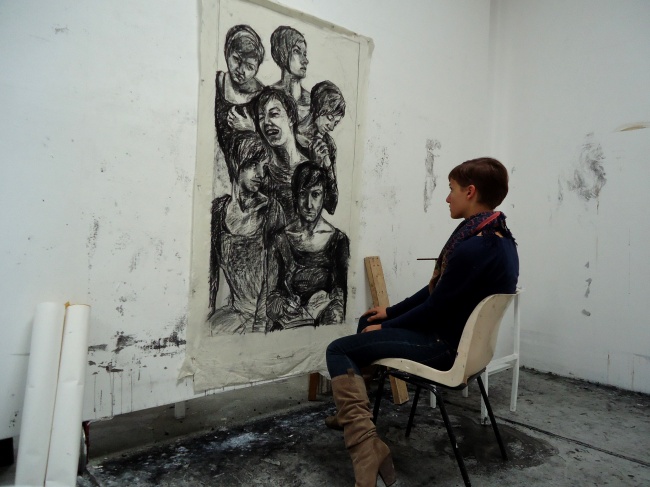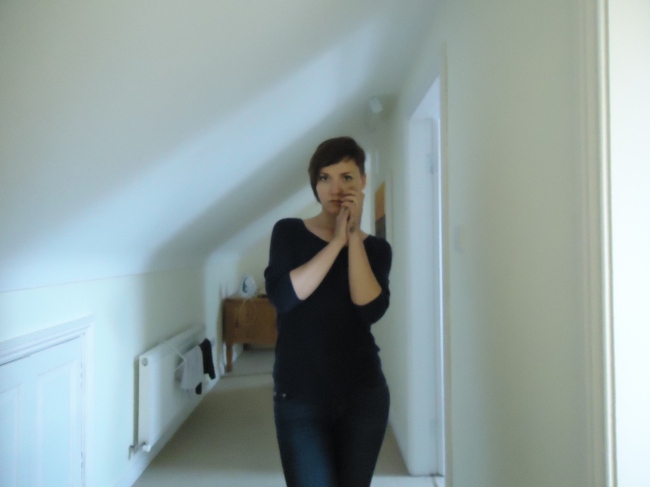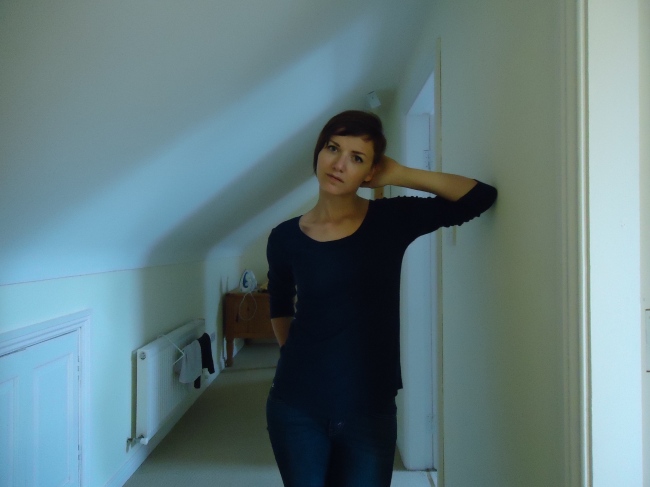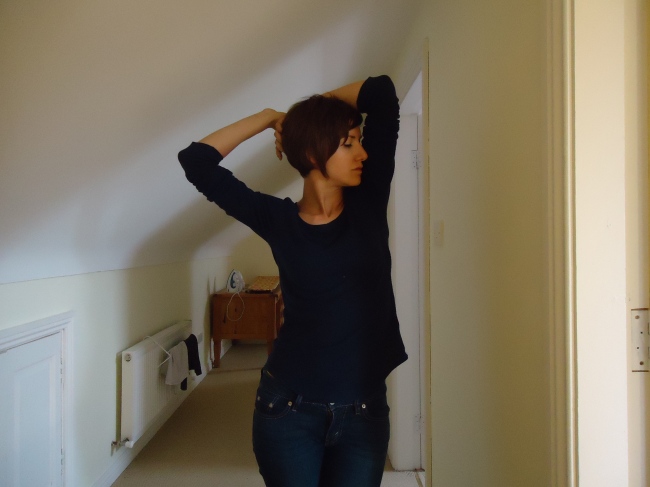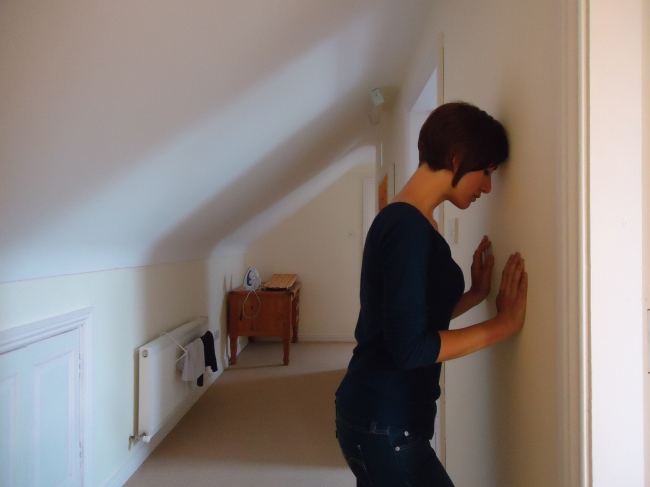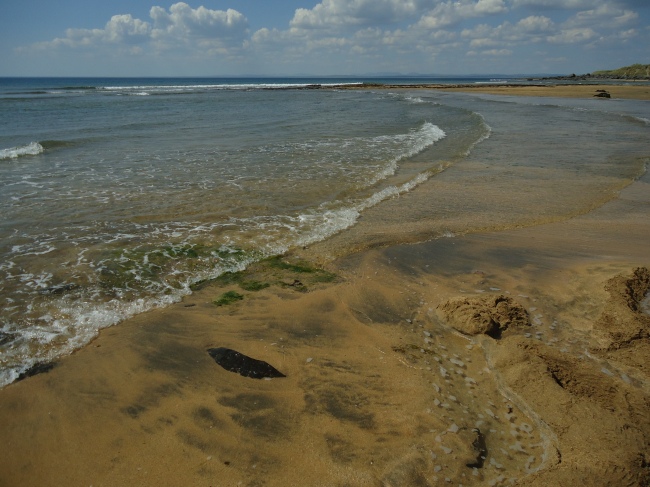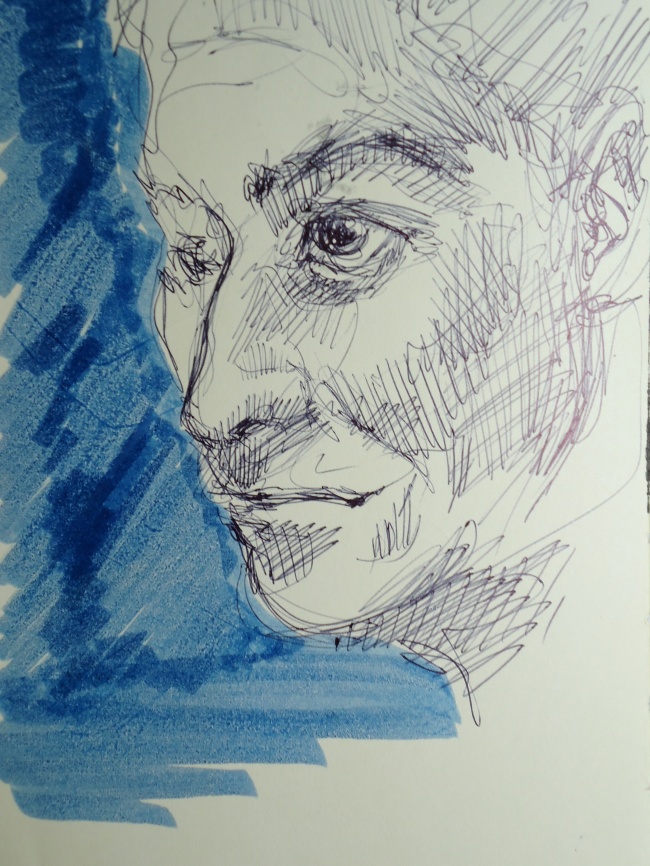On Friday night, my lady love, Xenia, arrived in Ireland for the last leg of a tour of Europe. We had dinner and a drink, staying pretty tame for a Friday. I took her to the whiskey bar, where we had Irish coffees and she regaled me with tales from Paris and Barcelona. It felt so strange that it didn’t feel strange at ALL having her here, since our only context of each other is home (Pittsburgh).
SATURDAY
We met first thing in the morning, Xenia and I, and decided to drive to Limerick in her rented car.
For me, Limerick has its own set of mixed memories, mostly happy ones, for the last time I spent weekends there was while I was dating Julien. In the States, those stories start as, “My Irish boyfriend…” I’ve always adored Limerick. It makes me think of an Irish version of Pittsburgh — low-key, not covered in or catering to tourists, a little bit gritty, with the River Shannon running through it in lieu of my Three Rivers. It’s also just about as rainy and foggy as what a Pittsburgher is used to.
We decided to go see the Limerick City Gallery of Art first, which is a great little space, and is currently showing a “responding to” show: fourteen artists look through the archives of the gallery, in this case specifically self-portraits, and respond to them in their own work. The place was covered in artist’s statements, each of which I took the time to read.
It’s kind of a funny bit of synchronicity that this type of show would be up, as just earlier in the week, I had been lamenting my desire to return to self-portraiture, thinking, What am I on about? All I did five years ago when I was at Burren College was self-portraiture; this would just be a return to the same stage I’ve already passed. I was concerned about regression, particularly during a moment in this residency where I felt tapped out on what I had been doing for the first six weeks. This show, however, reignited my spark for self-portrait, and I realised something that seems so obvious now: self-portrait is never a regression because you’re never the same person twice. It captures the current stage of your internal world, your outward appearance, and your artistic skill set.
Feeling revived artistically, we walked to the Milk Market, which has been in existence in one form or another since the 1840’s. Food markets and bazaars are one of my greatest loves. Even before we walked into the covered square, I could smell a mix of bread baking, fresh vegetables and fruits, and the aroma of meat cooking on an open grill; coupled with this were the sounds of people hawking their products, the din of hundreds of conversations going on at once, and weaving through it, the intermittent music of an Irish flute and a hand drum. I almost forgot myself as we perused stands of apples, rhubarb, and cabbage, tables sampling jams, relishes, and chutneys, a fresh hot dog vendor (that is to say, the hot dogs were fresh, not the vendor) with a queue slowly forming at the grill, and then we were stood between a table boasting a handsome variety of cheeses and a stand selling handmade soaps and essential oils. The mix of smells was at once jarring and pleasant.

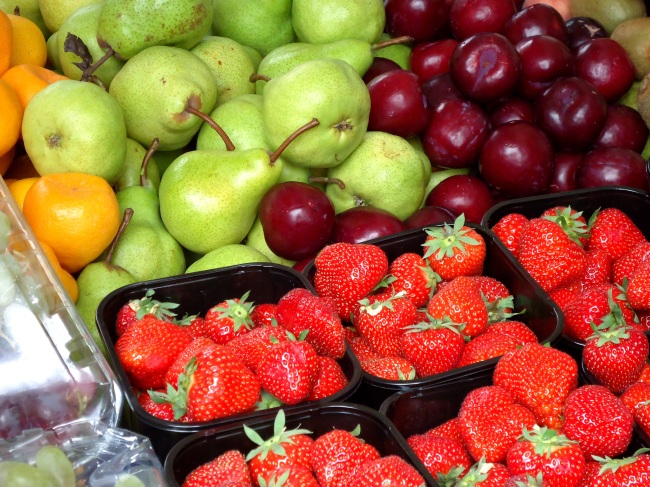
Xenia and I got caught up at a charcuterie, with a handsome guy with a blonde ponytail, who flirted with us by offering us multiple cured meat samples. We walked away with smoked mackerel, seaweed salami, and Irish chorizo, as well as a link to his blog — he was an artist studying in the city at the moment.
Then, the cheese counter. I think, no matter where I am in the world, if I can find a suitable cheese counter, my quality of life is immediately improved. No matter the ills of the world: war, famine, strife, arguments with loved ones, lost personal items — all of these, I’m convinced, can be solved with a brilliant smoked gouda, sharp cheddar, or a particularly complex edam. The smoothness of Irish sheep’s cheese and the bitey, gamey aspects of Stilton bleu pair effortlessly with green apple and walnuts and lead to nothing less than an all-day glow on my face.
In reverie, I wandered up and down every aisle of tables and stands. At a fish counter, I watched a large haddock effortlessly gutted and filleted, experienced quince jam for the first time at a lively nut and dried fruit stand, observed a goat with a red dog collar lurch forward for a bit of parsley from his owner’s hand as children looked on, giggling. For lunch, we broke our anti-hot-dog views for a real hot dog served in a natural Italian bun; sampled and then bought whisky marmalade; and I fell over myself when I discovered a round table selling nothing but pickled herring in a variety of flavours. Needless to say, I went home with a tub of that as well.
On the way out of the Milk Market, as Xenia and I recounted every counter we had stopped at, we were amused that we had not come across any actual milk. Then, just outside the square, on the wet, rainy pavement, we found a small white river that flowed between the cobblestones. Spilled milk.
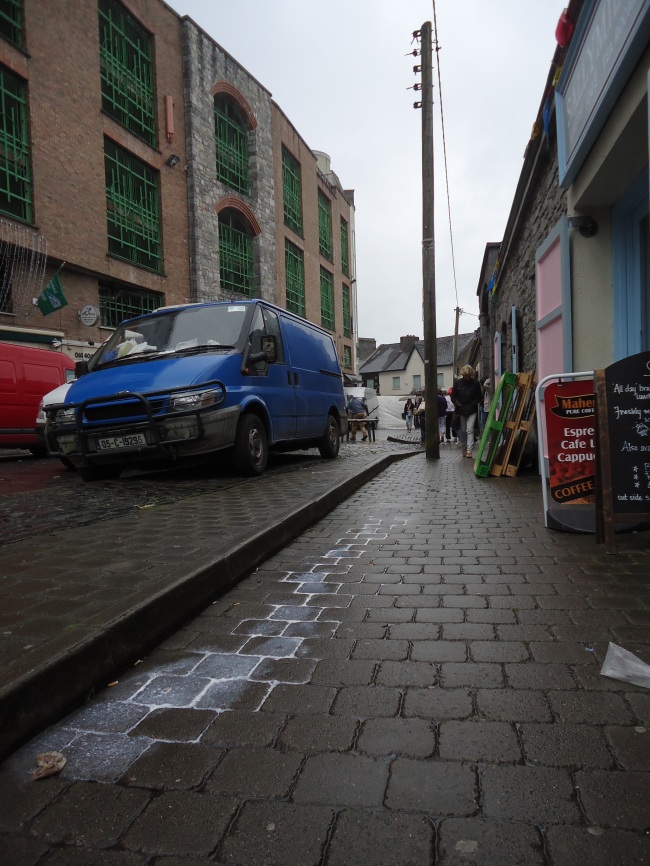
Our experience was complete, sans tears.
In the afternoon, we drove to Bunratty, a place just outside of Limerick with a famously well-preserved castle boasting hundreds of tours through both the castle and the “grounds,” a folk village preserved to give one a taste of local life hundreds of years ago. We traipsed up and down the stairs of the castle, which was bustling with a brazen Spanish touring group, as well as a few Germans dotted here and there. Most of our tour of carvings, tapestries, and murder holes consisted of running desperately away from the Spanish and pretending we weren’t American when an obnoxious exchange occurred with two whining children and their reprimanding mother. It’s very hard to pretend not to listen to an awkward family dispute when you’re jammed between a wall and a barred-off bedroom at the top of a spiral staircase, with five other people you don’t know crammed around you.
Though the castle was really quite lovely, and we experienced a spectacular view of the river and the land surrounding it, we were eager to get out into the folk village and tour the little houses on the property. I heard my first Cork accent in real, actual life: a man explaining to his son how dwellers of a tiny cottage would pull a ladder over to the loft to turn in at night. It was sing-song and lovely, made even better by the fact that he was speaking to his young child and therefore was more gentle in his tone. I don’t know why other Irish tease Cork for its accent; I think the song and cadence is immensely lovable.
In the village I nearly wet myself with joy: a buttercup-covered field was inhabited by two Shetland miniature ponies. Xenia could barely pull me away. Then we followed signs to the piggery, which boasted one large, handsome, ginger pig with pointed, dog-like ears and a long curled tail. It was Xenia’s turn to squeal with joy, which made me feel considerably less silly (as though I’ve ever cared about that sort of thing when it comes to animals).
In a separate coop, apart from other chickens and roosters, sat a little orange hen with her chicks. She was huddled, we at first thought, from the cold, but as we watched her closely, a little black eye appeared under her wing. Slowly, we could make out a tiny beak as well. As we realised she had tucked a baby under her wing, another one emerged from her other wing. Xenia and I agreed we had never seen anything like it.

By the time we were ready to go, the soft day had turned even softer, with the misty drizzle of rain turning from intermittent to constant. We were both tired and ready to catch a bite to eat on our way home. I had been a faithful driving assistant on the way there, making sense of the Hertz rental car map to move from country roads to motorway to get us into the city. On the way back, I rattled some quick instruction off to Xenia and promptly fell asleep.
When I woke up, Xenia pulled off onto the side of the road. “What’s up?” I asked.
“I don’t know,” she said.. “I think I missed the turn I needed. We’re in Galway County.”
“WHAT!” I was suddenly wide awake. “Right. Let me figure this out.” I studied the map, instructed her to get back onto the road, worked out an action plan — “We’ll take this road to this road; it’ll be a right turn; then, after we hit such and such village, there should be signs for this road.” A conversation like that happened every half hour, as our drive back home became riddled with inconsistencies on the roads, country and side roads that weren’t indicated on the inferior Hertz map, which only showed the big picture, and every time I thought we were going west, we were actually going north, or south, until I completely lost my sense of spacial reasoning.
I began to have a small fight with my Ego. I know how to read a map. I haven’t owned a GPS device for that long back home, and due to the weird, hilly pockets lacking service in the Pennsylvania woods, I generally almost never rely on it, preferring instead to consult a map. I can get myself out of any bizarre side-road country mess by studying a map for five minutes and coming up with a list of directions for myself. My father taught me how to read maps when I was nine and I have fared well enough to be able to brag about it. I am so proudly analog that my future children will know how to read a map, damn it, if I have any say about it.
We must have been on the road for over two hours; certainly twice as long as it should have taken us. Finally, we followed signs to The Burren, which led us to signs toward Ballyvaughan. I stared at the map until it began to make sense again. “Aha! So if we followed this road,” I began, “It must be at this intersection on the map that we turned.” Finally, I was sure where we were. We turned left toward the village and we could see the coast. Everything was making sense, as I finally recognised my surroundings. Until this moment: “Wait… how is the ocean on our RIGHT?” I had been convinced we were moving east. It turned out I was completely wrong. I looked at Xenia. She looked at me. I threw up my hands and tossed the map onto the dashboard. She burst out laughing. “Right. FINE. You win, Ireland,” I said, too tired to be upset anymore.
That evening, after our Narnia-like experience on the winding roads of Ireland, we were definitely due for drinks. We headed out with Juddy and Dominic, and I had way too many drinks (and by this I mean, because I’ve been on an insane workout and diet kick for the last week and a half, I had three glasses of wine — one sheet for each drink, if you get me), until we went round in our circle, singing songs. I belted out Regina Spektor and Xenia did a lovely rendition of a jazz song I didn’t know. From what I was told in the morning, I did stay in key, so I wasn’t too drunk to be good, thank God.
SUNDAY
After a lovely breakfast of cheeses, meats, pickled herring, tea and coffee, Juddy had offered to take me and Xenia out on a sea-side walk, as Xenia was unsure what to do and the boat tour of the Cliffs seemed too expensive for our skint financial state. We suited up for another soft day and drove down to Doolin. Our walk took nearly five hours, and as we walked along the shore we watched the seaside landscape change from smooth stone beaches to enormous limestone pavements, and steps that looked as though they were carved by giants hundreds of years ago. In several places I lost myself as I was pulled to high rocks to watch the sea swell and undulate before curling into a perfect blue foam wave and beat relentlessly against the black cliffs of the shore. My heart pounded nearly out of my chest in fear and exhilaration, the way I’ve felt only when I’ve been faced with divine visions.
You can hear God in a place like this. In the city, the static of living drowns out the sound. Part of what makes this place so meaningful to me is that here, I never lose track of who I am and my connection with the universe.
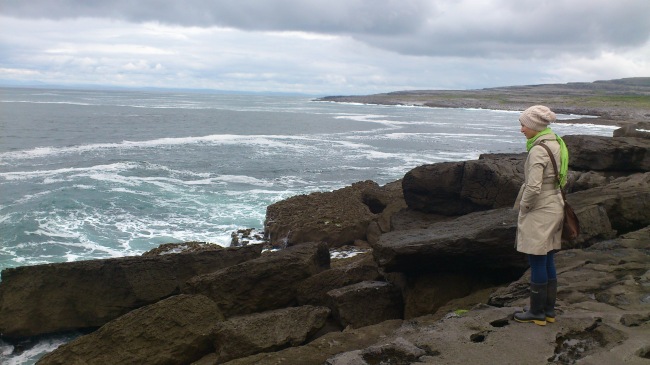
We ambled up and down the hills, nearing the shore and making our way away from it through fields of high grass and hundreds-year-old stone boundary walls. At one point, we came across a nearly full skeleton of a feral goat. When I lived here five years ago, one of my missions was to find an animal skull to take home with me. I had been told that feral goats lived in the mountains, so I climbed Cappanawalla on my own and walked across ghostly peaks of loose limestone, which rattled like bones under my feet. It was an amazing experience, but I came across no animal, living or dead. Admitting defeat, I went home that May with no bones. This time round, I’ve found a brilliant skull. I’m in the process of soaking it in bleach water. Hopefully it will ship home with no problem. (My parents are going to think I’m such a weirdo. However, I suppose if they don’t know me by now, there’s really no excuse.)
We came across so many snails, walking, as well! We decided to have a bit of fun and put a bunch of them in a row and place gentleman’s bets on who the winner of the snail race would be. “I suppose this is what people do without internet, huh?” I said to Xenia and Michael.
“Look! Mine is kicking ass!” responded Xenia.

We discovered a few sea caves with Juddy’s help, all with their own names. Mermaids is a little semi-circular groove cut out of the cliff of the shore, with platforms and rocks jutting from the mini-bay it forms, not unlike a place where mermaids would hang out and compare sailor-drowning notes. It’s lovely and inviting, but also kind of haunting, like someone was just there before you stepped down from the shore into it.
Hell was a beautiful one — a giant chasm in the raised platform shoreline, about ten or twelve feet long and four feet wide, with a twenty-foot drop into it. Looking directly into it, you can see the white foaming ocean water rush into it, hold, then rush back out, revealing angled rectangular rocks, like pillars from an ancient structure, coated in slippery pink algae. Further along, I discovered a point where you can stand on the pavement and beneath your feet, it sounds like the massive hull of a subterranean ship, with water knocking about in the empty spaces, now and then a wave breaking inside of it, causing a deep rumble. You can feel it in your feet, and then in each and every one of your bones. It was one of the single most exhilarating moments of my life, to stand there and listen. A part of the rock has a crack through it that’s called the Blowhole. If you place your hand against it the feeling convinces you that the stone is a massive creature, sucking in and blowing out a warm breath.
After hours of walking, with a short picnic break in between, we were exhausted, but seeing that Xenia was to leave on Monday morning, we decided she needed to experience a 99 before she left. We stopped at a shop in Fanore and I got all three of us one.
A 99 is a soft-serve vanilla ice cream in a waffle cone with a “flake,” or long rectangular chunk of chocolate, tucked into it. There is a debate about why it’s called a 99. Some people say it used to cost 99 pence, before inflation made it a Euro forty. Others say the flakes come in packs of 99 in the box, giving it its name. There is no real confirmation, however, and I find it’s a fun and lively conversation to strike up with shop owners and others enjoying a cone.
Every person has their own way of enjoying the flake, too: some sink it deep into the cone so that they can experience it until the ice cream is spent, others pull it out and use it as a scoop. I just let it jut out and eat round it before growing impatient and biting off a hunk of it in order to enjoy the chocolate taste.
All in all, it was the perfect end to a day of adventuring. I’m glad Xenia stopped by on her way home to the States; it was one of the best weekends I’ve experienced since arriving.

[“Will we have another snail race?” asks Xenia. “Actually, I kind of want to re-enact the Romeo and Juliet balcony scene here,” I reply.]
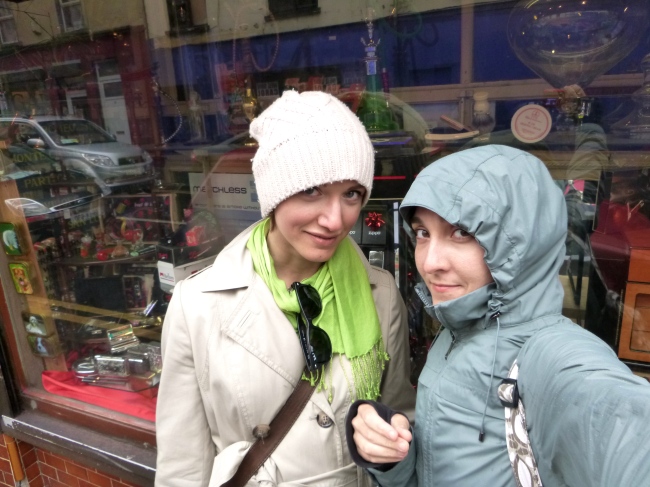
[Two classy motherfuckers outside of a smoke shop in Limerick. Here, Xenia holds an imaginary teacup as proof of said class.]

[Throwing shapes; making important faces: Brindy and Juddy.]
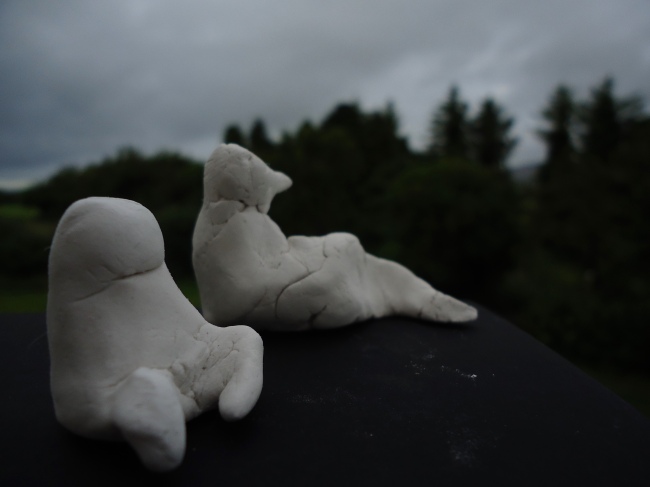
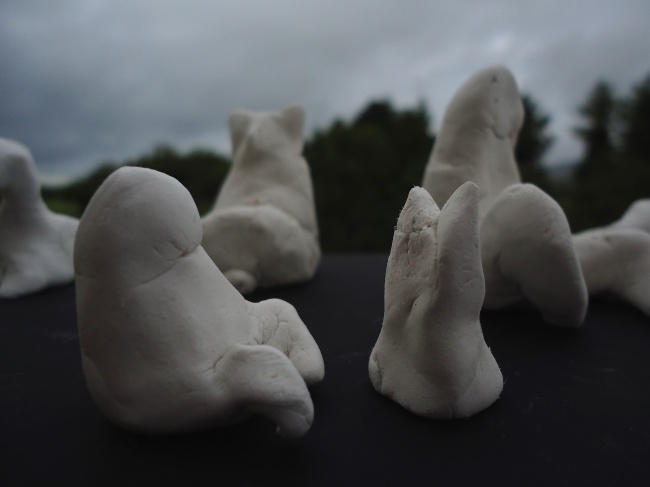

 Then, while watching a Criminal Minds marathon on Netflix, I thought I’d offset all the dead bodies and paedophiles and psychopaths with some sketching.
Then, while watching a Criminal Minds marathon on Netflix, I thought I’d offset all the dead bodies and paedophiles and psychopaths with some sketching.
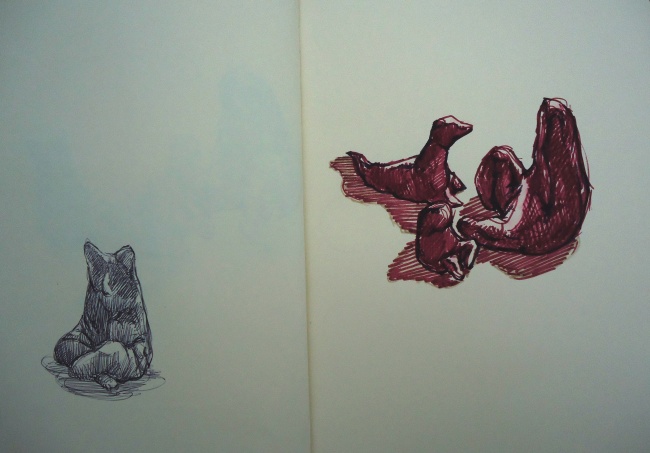 I thought I’d have some fun with no regard for the consequences, all in the name of art. Thoughts?
I thought I’d have some fun with no regard for the consequences, all in the name of art. Thoughts?
